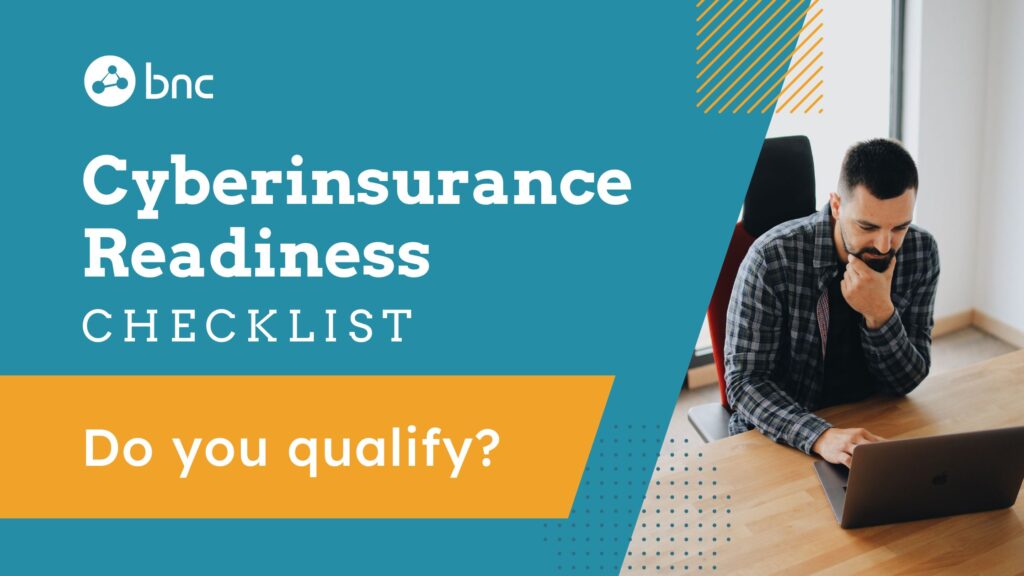
Cyberinsurance, also known as cybersecurity insurance or data breach insurance, is a specialized insurance policy that provides coverage against losses incurred as a result of a cyberattack or data breach. By having cyberinsurance, your business can recover from these incidents properly and in good time, and enable your business to continue its operations.
Cyberinsurance goes by other names like cybersecurity insurance or data breach insurance, but we’re talking about the same service. It’s a special kind of insurance policy that covers losses from a cyberattack or data breach. With cyberinsurance, your business is protected from these incidents, particularly the financial ramifications of a data breach. With ransomware for example, a hacker breaks into your system and takes all your data, encrypts it, then holds it for ransom, usually for millions of dollars. With small to medium sized businesses being one of their favorite targets, a million dollar ransom combined with the potential loss of company data can be catastrophic. Cyberinsurance protects businesses from that.
To qualify for cyberinsurance though a company must have certain elements in place to even get their foot in the door. A company with no data security measures in place will not qualify for insurance. That’s where an IT professional can come in and check a network for security and make sure they have all the right measures in place to qualify for insurance.
Your organization needs to be adequately prepared to make the most of your policy. The Cyberinsurance Readiness Checklist presented here will guide you through the essential steps to ensure you’re well-prepared.
Strong Access Controls
Having strong access controls is crucial if you want to qualify for cyber insurance. It’s like having a sturdy lock on your front door – it keeps the bad guys out. These controls ensure that only the right people can get their hands on sensitive stuff like your data and critical systems. Think of it as setting up a VIP list for your digital assets. By having tight password rules, giving access based on people’s roles, adding extra layers of security like two-factor authentication, and regularly checking things over, you’re making sure your digital house is well-protected. Plus, it’s a big plus when it comes to getting insurance coverage for cyber mishaps
Regular Vulnerability Assessments
Regular vulnerability assessments are like giving your digital defenses a health check-up to qualify for cyber insurance. Just as you’d visit the doctor for a routine check-up to catch any potential health issues early, vulnerability assessments help uncover weaknesses in your systems before cybercriminals exploit them. These assessments involve scanning networks, applications, and devices for vulnerabilities and potential entry points that attackers could target. By conducting these assessments on a regular basis, organizations can identify and patch up vulnerabilities promptly, reducing the risk of data breaches and other cyber incidents. This proactive approach not only strengthens security but also demonstrates a commitment to risk management, which can enhance eligibility for cyber insurance coverage.
Incident Response Plan
Having a solid incident response plan is essential when it comes to qualifying for cyber insurance. It’s like having a fire escape plan – you hope you never need it, but it’s crucial to have just in case. An incident response plan outlines the steps to take when a cyberattack or data breach occurs, ensuring a swift and coordinated response to mitigate damage and minimize downtime. It involves identifying key personnel, establishing communication channels, and outlining specific actions to contain the incident, investigate its cause, and restore normal operations. By having a well-thought-out incident response plan in place, organizations demonstrate their readiness to handle cyber threats effectively, which is a key factor in securing cyber insurance coverage.
Employee Training
Employee training is a linchpin for qualifying for cyber insurance – it’s like giving your team the tools they need to navigate the digital landscape safely. Just as you’d educate employees on workplace safety procedures, cyber insurance requires training on cybersecurity best practices. This includes raising awareness about phishing scams, password hygiene, social engineering tactics, and recognizing suspicious activities. By arming employees with knowledge and skills to identify and respond to potential threats, organizations can significantly reduce the risk of human error leading to cyber incidents. Regular training sessions also keep employees up-to-date with evolving cybersecurity threats and strategies, fostering a culture of security awareness across the organization. Ultimately, well-trained employees not only enhance the overall security posture but also play a vital role in meeting the requirements for cyber insurance coverage.
Multi-Factor Authentication (MFA)
Think of Multi-Factor Authentication (MFA) as putting an extra padlock on your digital accounts – it’s a game-changer for getting cyber insurance coverage. Just like adding a PIN to your debit card, MFA beefs up your security by requiring more than just a password to get in. You might need to punch in a code sent to your phone or use a fingerprint scan along with your password. It’s like having a bouncer at the door who wants to see more than just your ID. By using MFA, you’re making it a lot harder for hackers to bust in, and that’s a big thumbs-up from cyber insurance providers. So, adding MFA not only keeps your digital stuff safer but also helps you tick off one of the boxes for getting the best cyber insurance coverage out there.
Encryption of Key Data
Encrypting key data is like putting your important documents in a locked safe – it’s a smart move when it comes to cyberinsurance. Just as you’d want to keep your valuables secure, encrypting key data adds an extra layer of protection against prying eyes and cyber threats. It scrambles sensitive information into a code that only authorized parties with the right decryption key can access. This means that even if hackers manage to get their hands on your data, they won’t be able to make heads or tails of it without the key. By encrypting key data, organizations demonstrate a commitment to safeguarding their most critical assets, which can be a significant factor in qualifying for cyber insurance coverage. It’s like having a fail-safe for your digital treasure chest – ensuring that your data remains safe and sound, no matter what.
Privileged Access Management
Think of Privileged Access Management (PAM) as your digital bouncer – a must-have for scoring cyber insurance. It’s like putting velvet ropes around your VIP section, making sure only the right folks get in. With PAM, you’re keeping tight control over who can access your most critical systems and data, like handing out backstage passes only to trusted crew. By managing these high-level accounts carefully, you’re lowering the risk of sneaky insider moves and unauthorized access. It’s like having a security guard keeping watch over your digital fortress, and that’s exactly the kind of thing cyber insurance providers love to see. So, with PAM in place, you’re not just locking down your digital VIP lounge – you’re also getting closer to locking in some solid cyber insurance coverage.
 By adopting strong access controls, regular vulnerability assessments, an incident response plan, employee training, MFA, encryption of key data, and privileged access management, organizations can establish a solid defense against cyber threats, making your company’s data much safer and reducing costs to the business in case of an actual ransomware attack. Taking these proactive measures not only enhances cybersecurity but also positions businesses to secure favorable cybersecurity insurance coverage in an ever-evolving threat landscape.
By adopting strong access controls, regular vulnerability assessments, an incident response plan, employee training, MFA, encryption of key data, and privileged access management, organizations can establish a solid defense against cyber threats, making your company’s data much safer and reducing costs to the business in case of an actual ransomware attack. Taking these proactive measures not only enhances cybersecurity but also positions businesses to secure favorable cybersecurity insurance coverage in an ever-evolving threat landscape.
Get In Touch With BNC To Get Started
As your trusted IT/Security consulting partner in Denver, Dallas, and Austin, BNC is dedicated to helping your business enhance its cybersecurity posture and minimize cyber risks. By following BNC’s Cyberinsurance Readiness Checklist, you can ensure that your business is well-prepared to face the challenges of the digital age.
Our experienced IT/Security consultants will work closely with your team to evaluate your specific needs and provide tailored solutions that strengthen your cybersecurity defenses. Don’t wait until a cyber incident occurs to realize the importance of comprehensive cybersecurity measures. Contact BNC IT Consulting today to begin your journey toward a safer and more secure digital future. Together, we can safeguard your business and protect it from the ever-present threats in the world of cybercrime.
